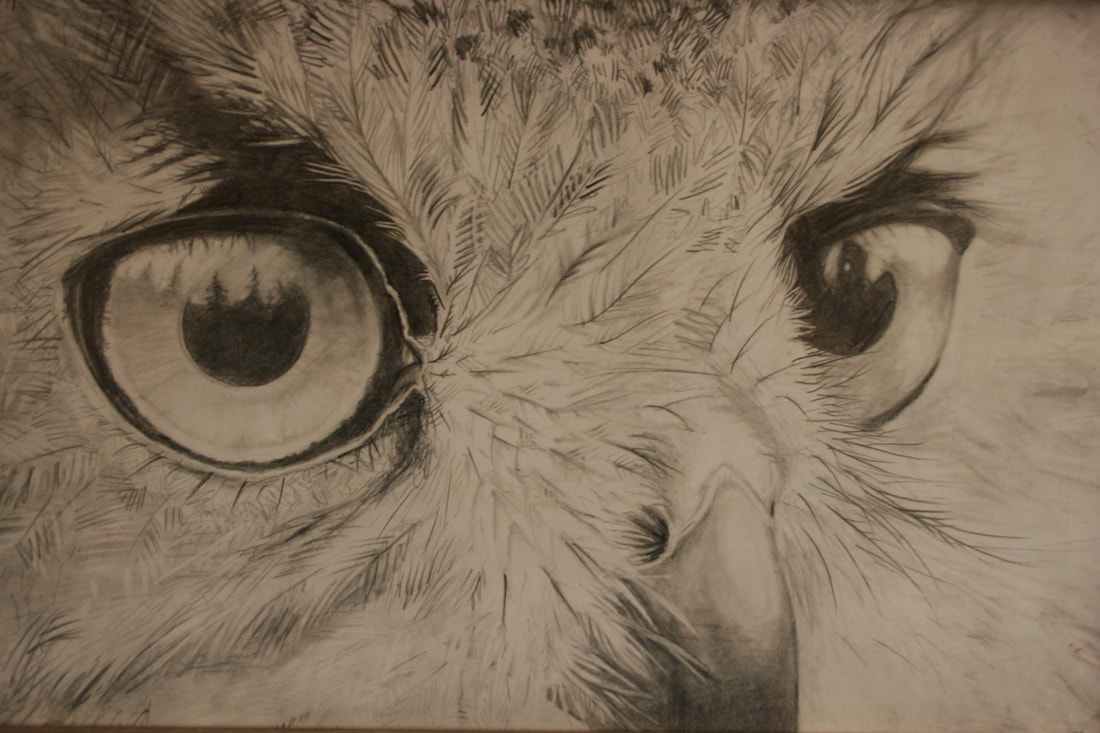|
By Janelle Eklund
Sun shimmered in the clear blue sky as I parked off the road near Yetna Creek in Copper Center. Lines of hip waders and boots lay on tarps according to size. Kate, Robin and Carla* were discussing last details of the coming lesson. The Kenny Lake school van pulled up and eleven ninth and tenth graders popped out eager to jump into gear and explore the world of stream biology. These young potential biologists were not new to this fascinating world of scientific exploration. Last fall they got their first taste of wading in streams to survey its inhabitants, take water quality, measure depth and width, and document culvert impacts. The main goal of this research project is to see if salmon make their brief home in creeks and streams that haven't been surveyed, like Yetna Creek. If found in this tannin brown stream, Yetna Creek would take its place on the list as being an anadromous (salmon bearing) stream amidst many others in the Copper River Basin. On this day, May 18, the eleven explorers were divided into groups of three and four to study different areas of the Creek. Clip boards and data forms, cameras, tape measures, ph/temperature meters, and water quality kits in hand they bushwhacked through brush along the stream and delved into recording their surveys. It was hard to hold back from not just jumping in the creek on this unusually hot spring day. Sometimes only one person was needed in the water at a time. Carrying the tape measure across the creek to get width measurements, a sturdy stick became the safety tool for determining depth and bottom stability as one slowly ventured across. The coldness of spring snowmelt water permeated the thin wader layer, chilling the body - which wasn't too much of a problem on this hot day. But by the time width and depth measurements were taken in several place, and determining bottom contents by moving the feet, the chill effect started taking its toll. A refreshing climb out of the creek and into the hands of the warmth of sun in the air cured that problem. Minnow traps were set the day before by the instructors. The next 'biologists' were delighted to immerse themselves in the stream to retrieve minnow traps. Everyone gathered around anxious to see what lived in the stream. Two beetles and two caddis fly larvae were caught in two separate traps. At first glance the caddis flies looked like sticks. But looking closely you could see a head and legs active at one end of the 'stick'. Students gently let them linger on their hands to get a closer look and a picture. What a sight! They were then released back into their watery home unharmed. Another group was excited to see a choho salmon and a sculpin in the traps they surveyed. Other traps on this day were empty of life. With surveys finished and a little time to see where the stream meandered the students enjoyed 'getting their feet wet' in the marshy area that unfolded in their adventure. The student’s surveys in both Fall and Spring proved to be a great success. Among Long Nose Suckers and Arctic Grayling, Chinook salmon fry were discovered in the Fall, and a Coho salmon in the spring, much to the delight of the young 'biologists'. They can be proud that they were instrumental in submitting Yetna Creek for inclusion on the prestigious anadromous list to Alaska Department of Fish and Game. This important information helps the State manage the health of fish habitat. On the one hand if there is an oil spill or other contaminant the anadromous streams are first priority for response. On the other hand other agencies will look at the data collected to include in their fish habitat data. So all you budding biologists do important work! Two days later twenty four seventh graders walked from school to Trooper Creek in Glennallen to complete surveys like those done on Yetna Creek for the same reasons. Students also surveyed this creek last Fall. Out of the many traps set in Trooper Creek, no salmon were present but other fish included 179 Long Nose Suckers, two Sculpin, three Rainbow Trout, and thirteen Arctic Grayling. This Copper River Watershed Project program is called Salmon Blitz and you can volunteer to help. There are exciting opportunities this summer for youth and adults to get their feet wet in aquatic programs exploring the wonderful world of life in and around the water. On July 18 join Wrangell Mountains Center and WISE in McCarthy for an afternoon of examining macro invertebrates, testing water quality, checking minnow traps and learning about fish and salmon life cycles. Contact WMC info@wrangells.org/, ph 554-4464 to sign up. Sign up your 10-14 year olds for the Aquatic Ecology three day Camp August 4-6 by contacting Robin at runderwood@wise-edu.org or Lyda at lrossi@wise-edu.org, ph 822-3575. Students will explore lakes and ponds on the McCarthy road, learn to canoe or row a boat and, weather permitting, go for a swim. On Friday, August 21 at NPS theater, WISE will sponsor a lecture/training for volunteers and families wanting to participate in the Salmon Blitz program. This is a great summer to get outside and explore the water! From my light to yours- *Kate Morse, Copper River Watershed Project; Robin Underwood, WISE; Carla Schierholt, volunteer.
1 Comment
Copper River Record 2015
By Robin Mayo When WISE presented our first Changing Seasons program in 2003, Emmie VanWhye was a third grader. She remembers making leaf rubbings, excited to watch the pattern of the leaf “skeleton” emerge as she rubbed with a crayon. When she was in 4th and 5th grades, she recalls going to Wrangell-St. Elias National Park Visitors Center for Earth Discovery Day, where the recycling information and games made a big impression, especially the image evoked of discarded bottled water containers stretching to the moon and back. In 2009, Emmie was chosen to participate in the Copper River Stewardship Program, and spent ten days with a group of teenagers from the Copper Valley and Cordova. The youngest of the group, she was initially intimidated, and worried she would not be able to keep up with the older kids. As they rafted down the Copper River, her confidence grew. The group set up camp in pouring rain, learned to row, and along the way grew in their understanding of each other and the watershed they all call home. Emmie also participated in the Copper River Stewardship Program in 2011, this time a seasoned veteran who took on a leadership role among the students. The group travelled to McCarthy and went flightseeing in a small bush plane, an experience which Emmie describes as “definitely the coolest thing I have ever gotten to do.” Building on knowledge and experiences gained in the Stewardship Program, Emmie began volunteering at Earth Discovery Day, first as an assistant, then as lead instructor for the presentation on pollution and enviroscape. Using a model of a typical landscape, she explained the differences between point source and non-point source pollution. Colored liquids are used to show how quickly a small mess can become a big problem as it enters groundwater and river systems. With a growing interest in the environment and pollution issues, Emmie began looking for more opportunities to learn, and her experience with WISE was a stepping stone to be accepted for programs like UAF’s Girls on Ice, and the Alaska Youth for Environmental Action conference in Juneau. After her graduation from Kenny Lake High School in 2013, Emmie went to the University of Alaska in Fairbanks. She is studying Rural Development with an emphasis on Natural Resource Development. Her favorite classes are on conservation and sustainability, and after graduation she hopes to work on sustainable agriculture in Alaska. Emmie feels her experiences with WISE “helped me learn what I really like to do, and contributed to the path I chose.” |
Who We AreWISEfriends are several writers connected with Wrangell Institute for Science and Environment, a nonprofit organization located in Alaska's Copper River Valley. Most of these articles originally appeared in our local newspaper, the Copper River Record. Archives
August 2021
Categories
All
|
|
WISE is a
501(c)3 nonprofit organization |
Contact Us |


 RSS Feed
RSS Feed
